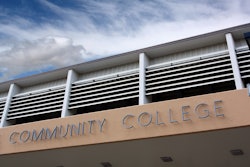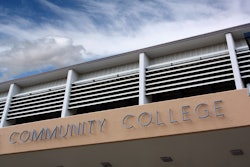When James Gray studied the disaggregated data of student performance in developmental math courses at the Community College of Aurora (CCA) in Aurora, Colorado, the achievement gap was clear. White students were outperforming their Black and Latinx counterparts.
“That was an overwhelming feeling to see that, thinking, how do we take this on and what do we do?” asked Gray, a member of the mathematics faculty at CCA and an affiliate with the Center for Urban Education at the University of Southern California’s Rossier School of Education.
 James Gray, mathematics faculty at Community College of Aurora and an affiliate with the Center for Urban Education at the University of Southern California’s Rossier School of Education
James Gray, mathematics faculty at Community College of Aurora and an affiliate with the Center for Urban Education at the University of Southern California’s Rossier School of Education
Gray shared these solutions for a more equitable education with other community college scholars at Achieving the Dream (ATD)’s second Operationalizing Equity, Social Justice, and Inclusion webinar. ATD is a nonprofit network organization of community colleges working to improve student success. Gray and others talked about the data needed for institutional self-introspection, syllabus and pedagogical adjustments, and the patience it takes to make incremental, but meaningful, change.
CCA reached out to the two school districts they primarily serve, one majority Black and Latinx and the other predominately white. They invited the high school math coaches to come and discuss with CCA’s faculty the ways in which they teach math.
“We found that most of our faculty teaching aligned with the white school district. Our faculty was dismissive of the way the Black and Latinx teachers taught,” said Gray. “For the students coming in, we were creating the narrative that they were underprepared. We found we just didn’t know how to teach them.”
The math department at CCA chose to buckle down and target the problem one student, one class, at a time. As they did so, the faculty learned new ways to engage with the students that produced “significant changes,” said Gray.
















